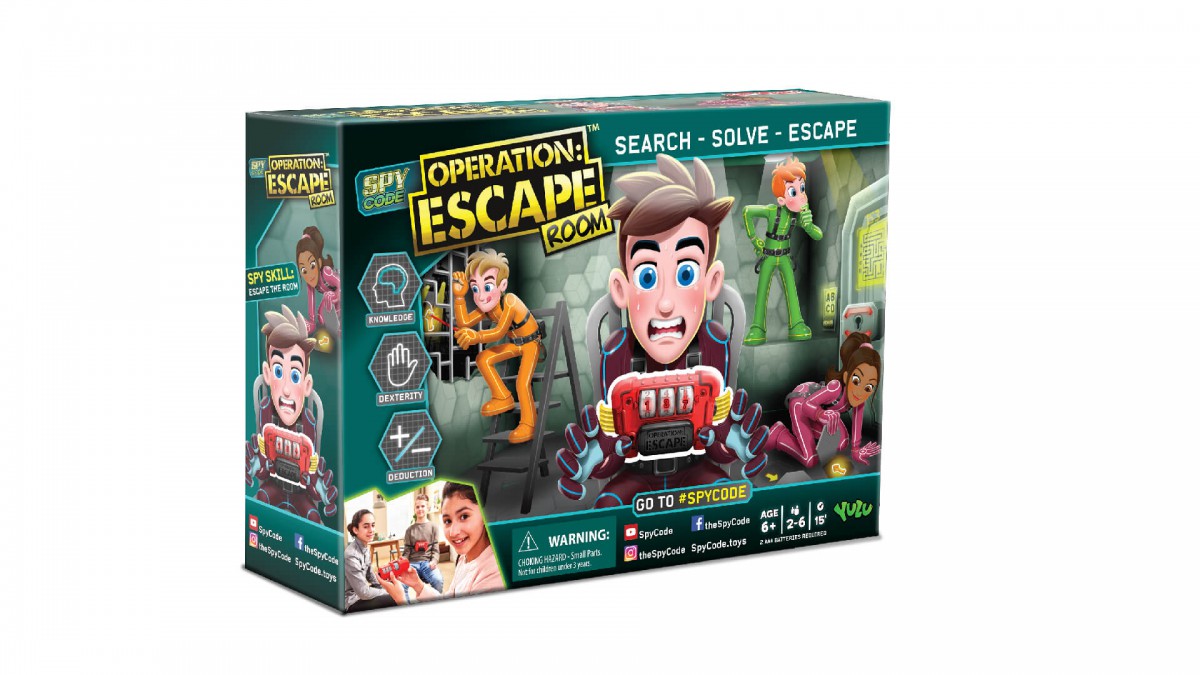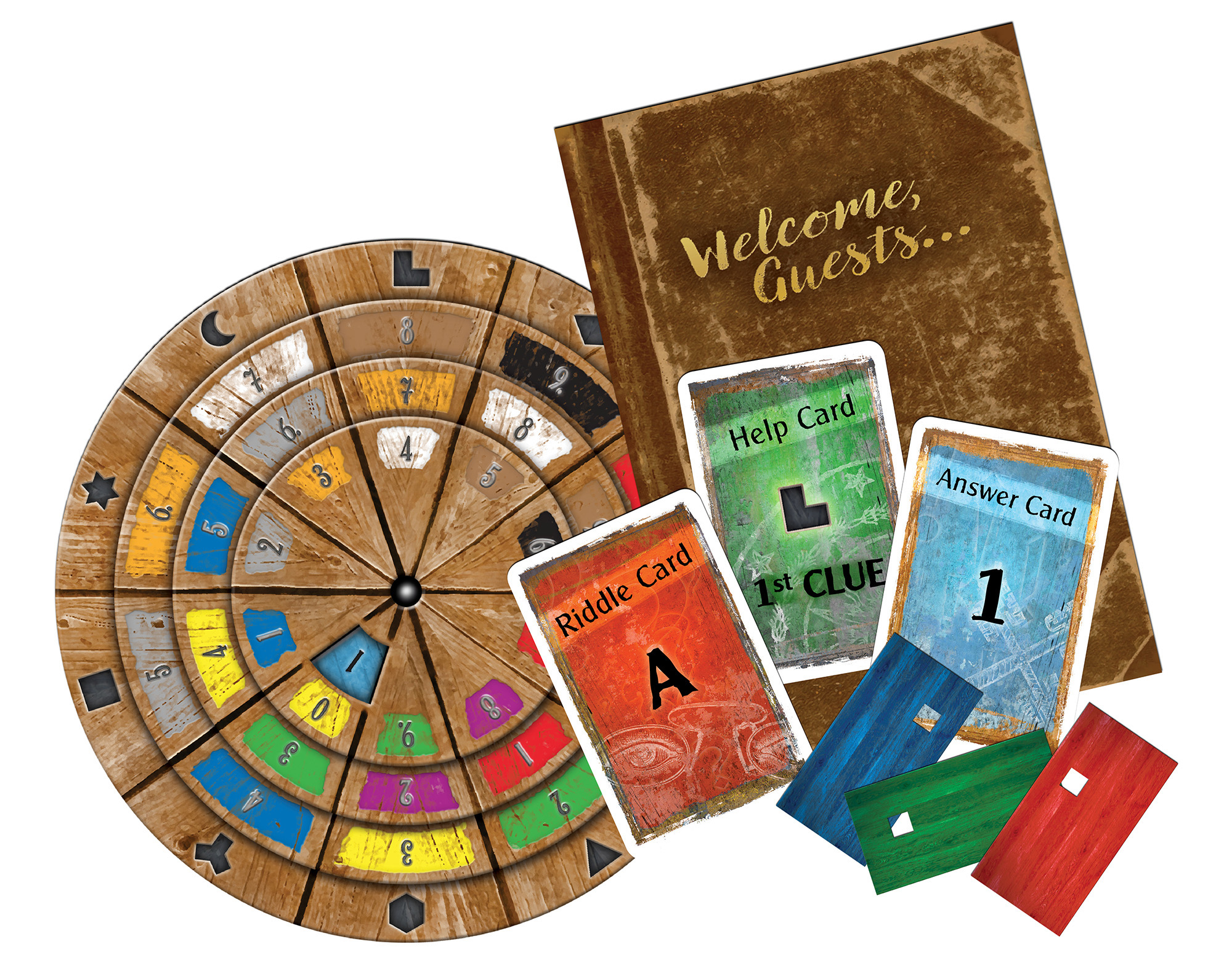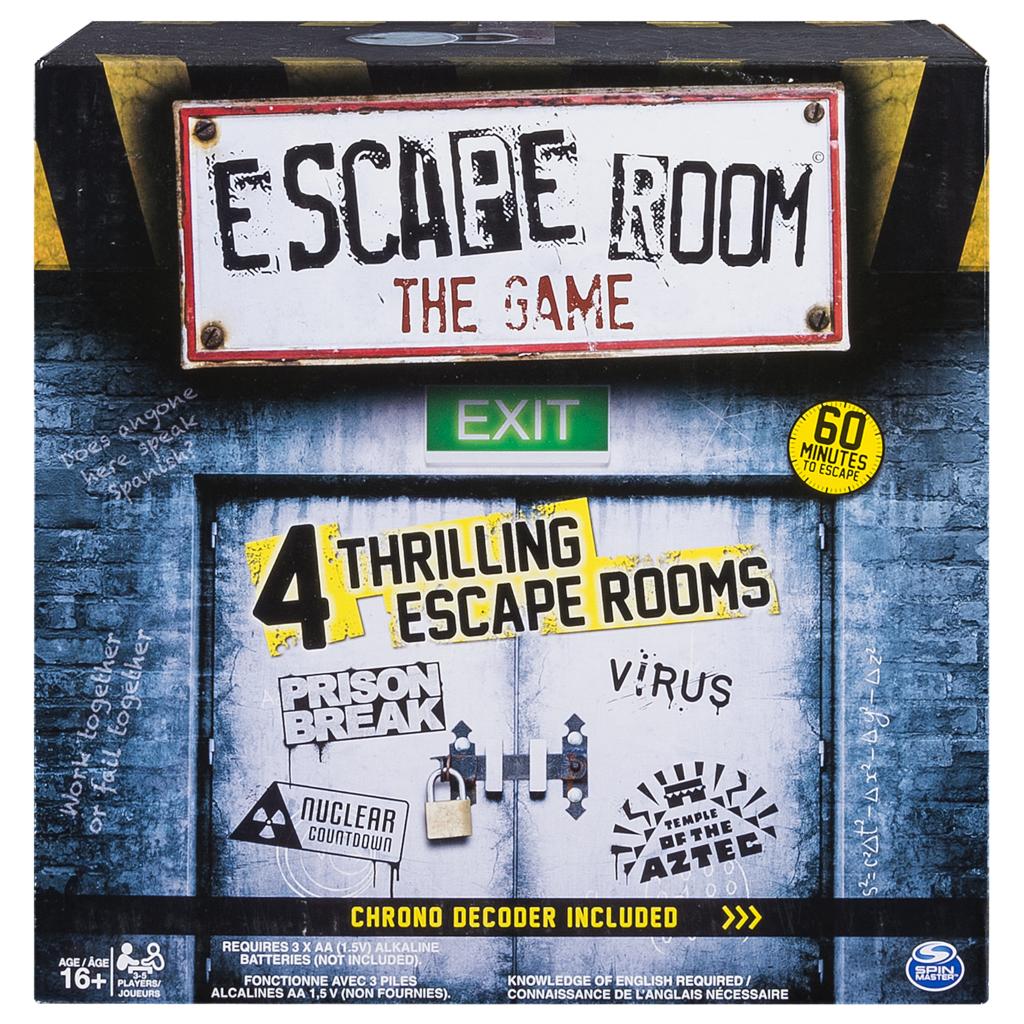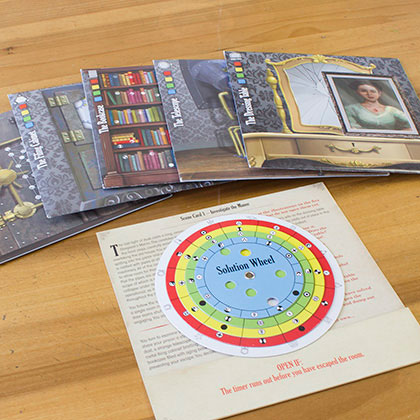Publisher:
Yulu
Languages:
No language needed
# of Players:
1+
Age:
6+
Duration:
120 min
BoardGameGeek Reference:
None (Guess it's considered more like a toy than a board game)
Game Design & Mechanics
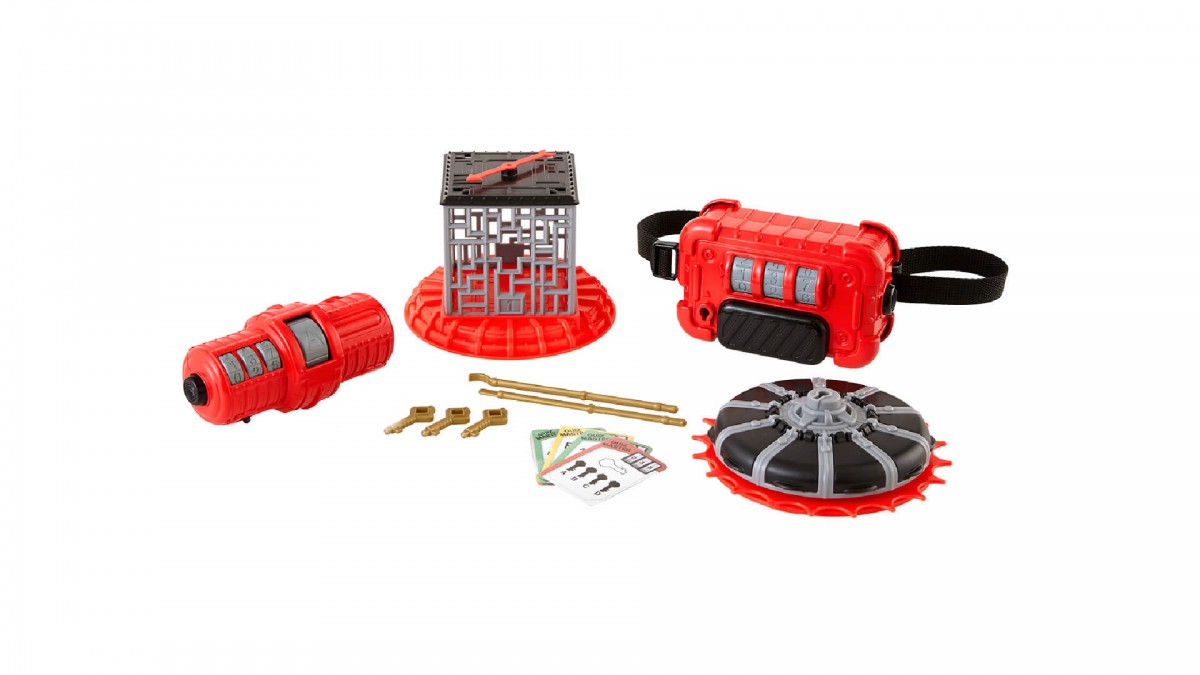 |
| Picture from the manufacturer's website |
- The game is made of 4 main components, each of them being a stand-alone toy in its own right.
- First, there's a "ticking time bomb" belt that you can set to a number of seconds of your choice, lock around your favorite hostage's belly, and set off. From that moment on, you need to insert a small key in order to stop the clock and unlock the belt. (Alright, let's clear that matter right away: the game comes with three keys, and they're all identical. Using the first key to get the two others is just part of the rules.)
- The next toy is a puzzle box with each side shaped like a maze. A key is placed inside it, and a player will try moving it out of the box using two plastic hooks.
- There's also a cryptex of sorts, with 3 dials sporting digits and one with A-B-C-D. It requires a key to operate, and stores another key inside it. To figure out how to open it, players can look a cards of increasing difficulty (green-yellow-red) showing a single, wordless, multiple choice puzzle. You enter the card number on the small dials, you pick your answer on the big one. If you guessed right, the key slides out a bit, but if you made a mistake, it slides fully back in. You'll need 3 consecutive good guesses in order to retrieve that key.
- The final device is a "guessing wheel". You unlock it using a key, give it a spin, and then you're allowed to open 3 of its doors, hoping to find the one with the last key (the one meant to go into the bomb). Some doors will show you an arrow pointing clockwise or counterclockwise, so the game is sort of a visual variant of the classical "high-low" number guessing game. After 3 attempts, the player must close all the doors, and re-spin.
- The game can be played competitively (with every player taking a turn and trying to get the best time) or cooperatively (with players splitting tasks and trying to get out in time).
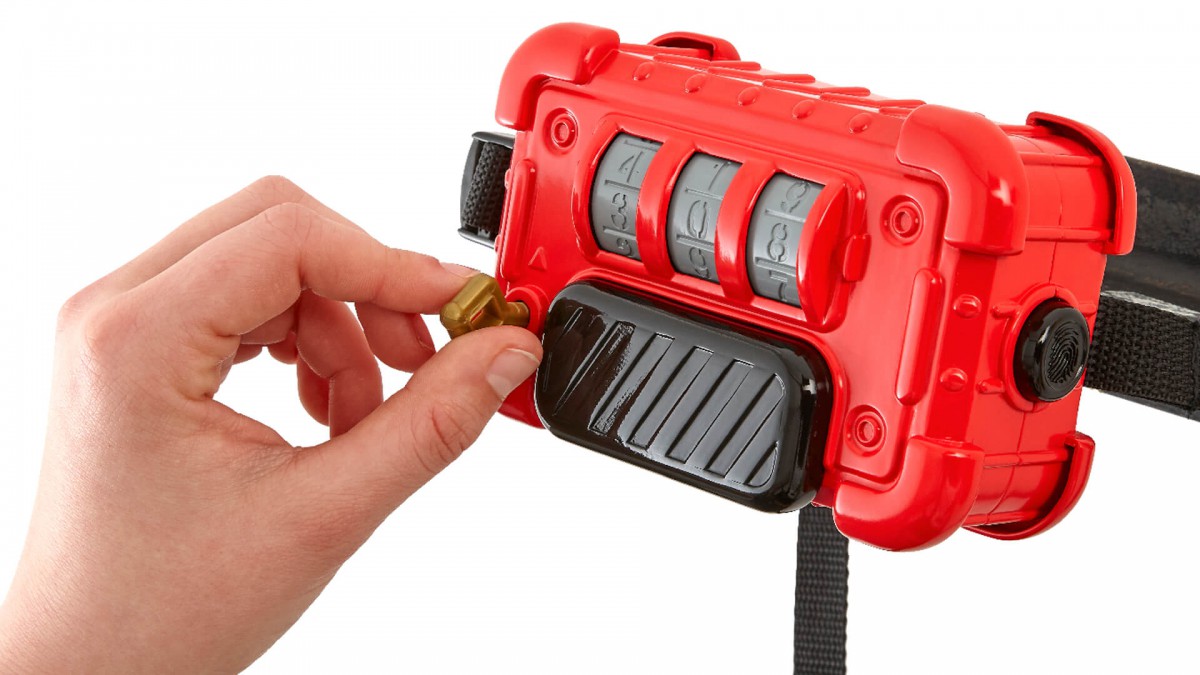
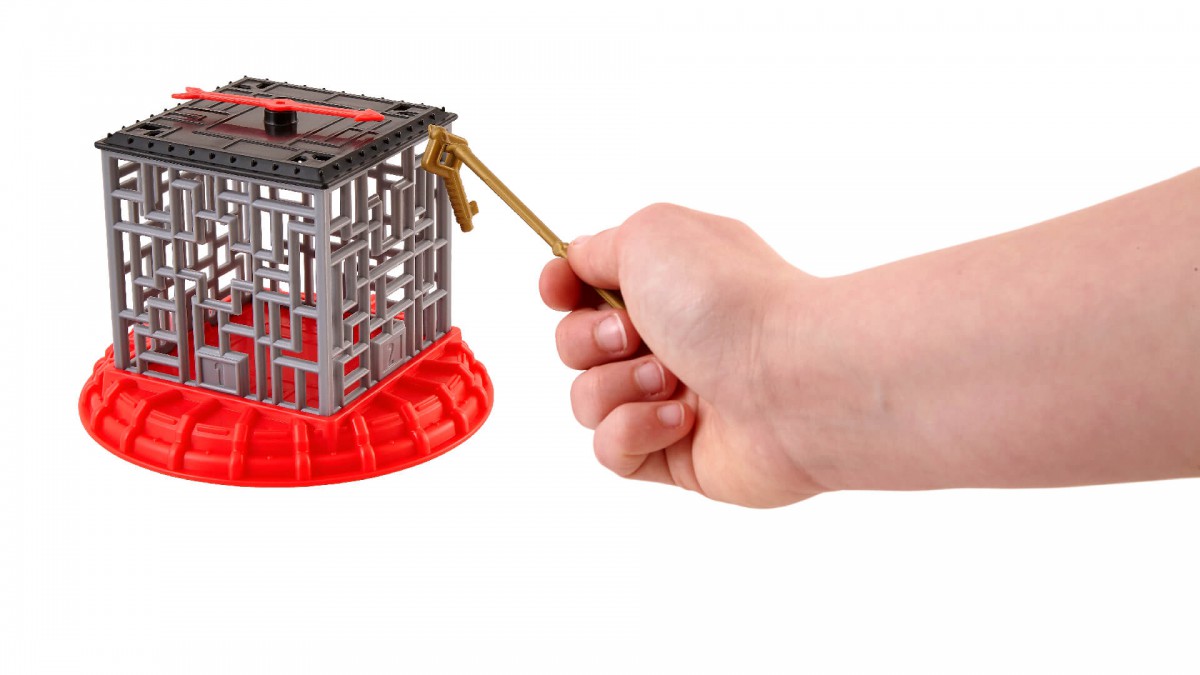
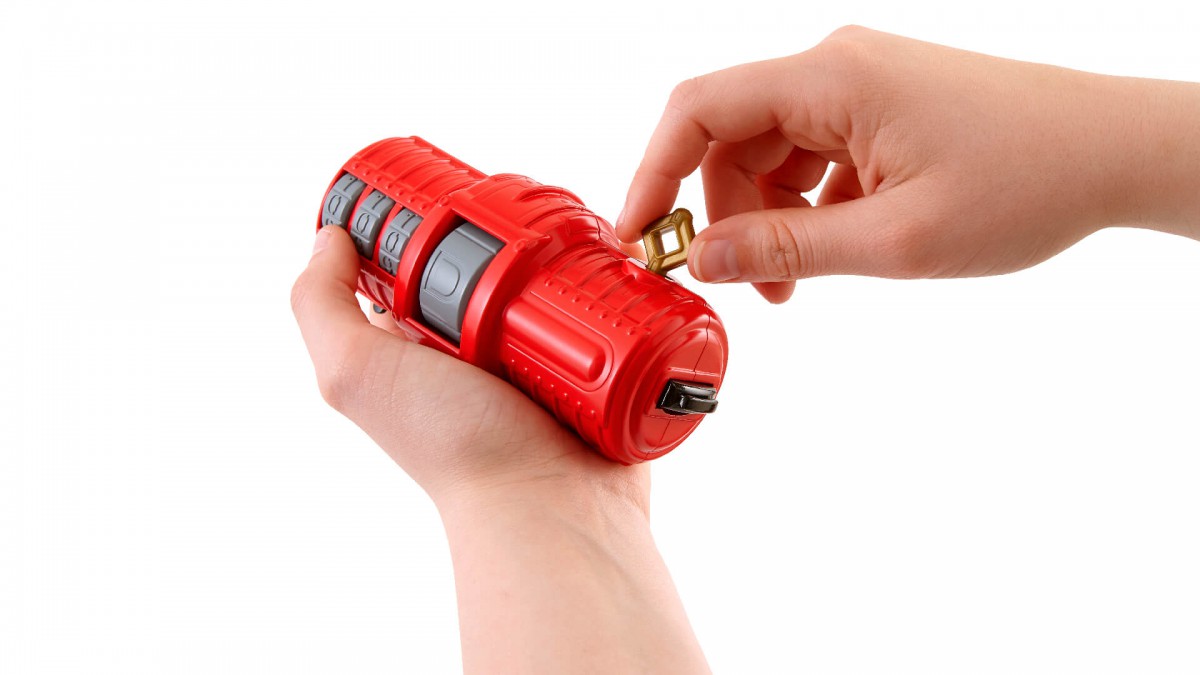
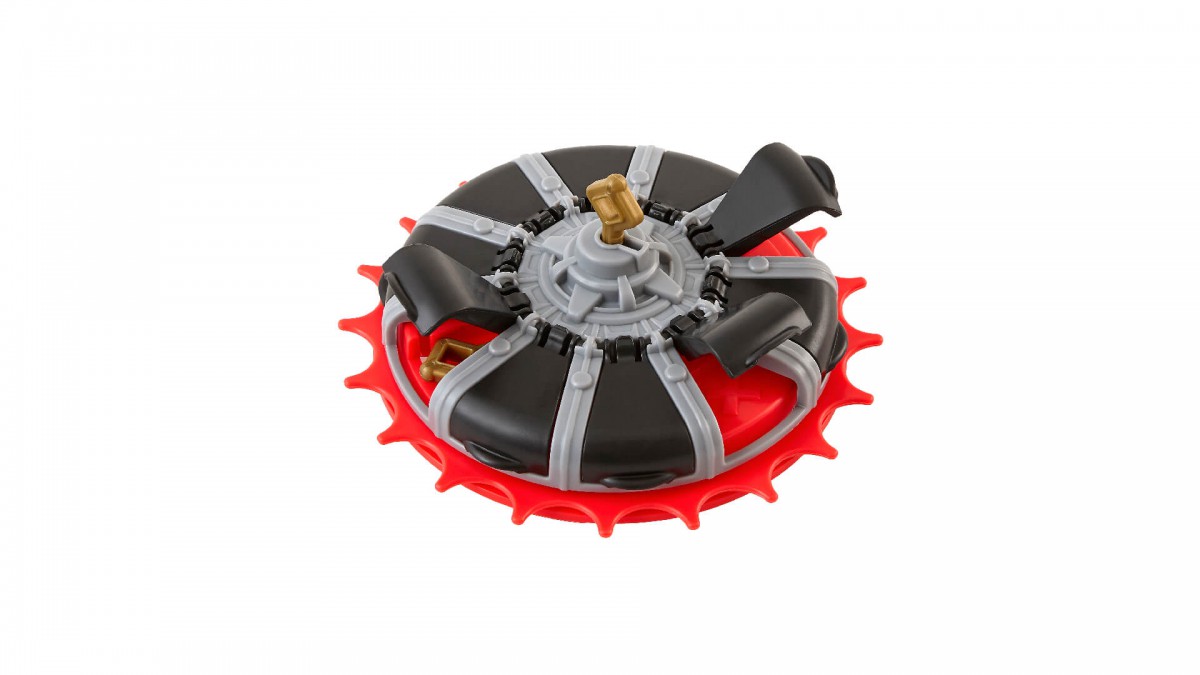
Pros
- The game is highly customizable, which means you can calibrate its difficulty any way you see fit. An adult could be forced to used to toughest side of the maze box, 3 red cards, and have less time, while a younger child can pick a random side, 2 green cards and 1 yellow, a have more time to proceed, for instance.
- Instead of seeing this item as a game with strict rules, you can treat it just as a set of individual kid-proof components. A couple days after getting the game, my son designed a slightly more complex escape room that used the game parts coupled with some original puzzles and room-searching.
- The components are wordless (the puzzle cards are visual-only), which means even pre-school kids might be able to play the easiest puzzle cards.
Cons
- Even though the game marketing is definitely focused on the "Escape Room" angle (the game was even sold as "Operation Escape Room" at some point), I don't think it really qualifies, hence the infamous "notquite" tag on this entry. If you play the game as-is, there won't be any room searching, nor any "figuring out what needs to be done next", two staples of escape rooms in my mind.
- The game, on its own, won't keep adults entertained for more than 2 or 3 games... which means, in total, less time than most escape rooms.
- The "explosive belt" is rather small, unlikely to fit most adults. Sorry, pops - you likely won't be the one tied down to a chair. (But then, is that really a drawback? 😈)

